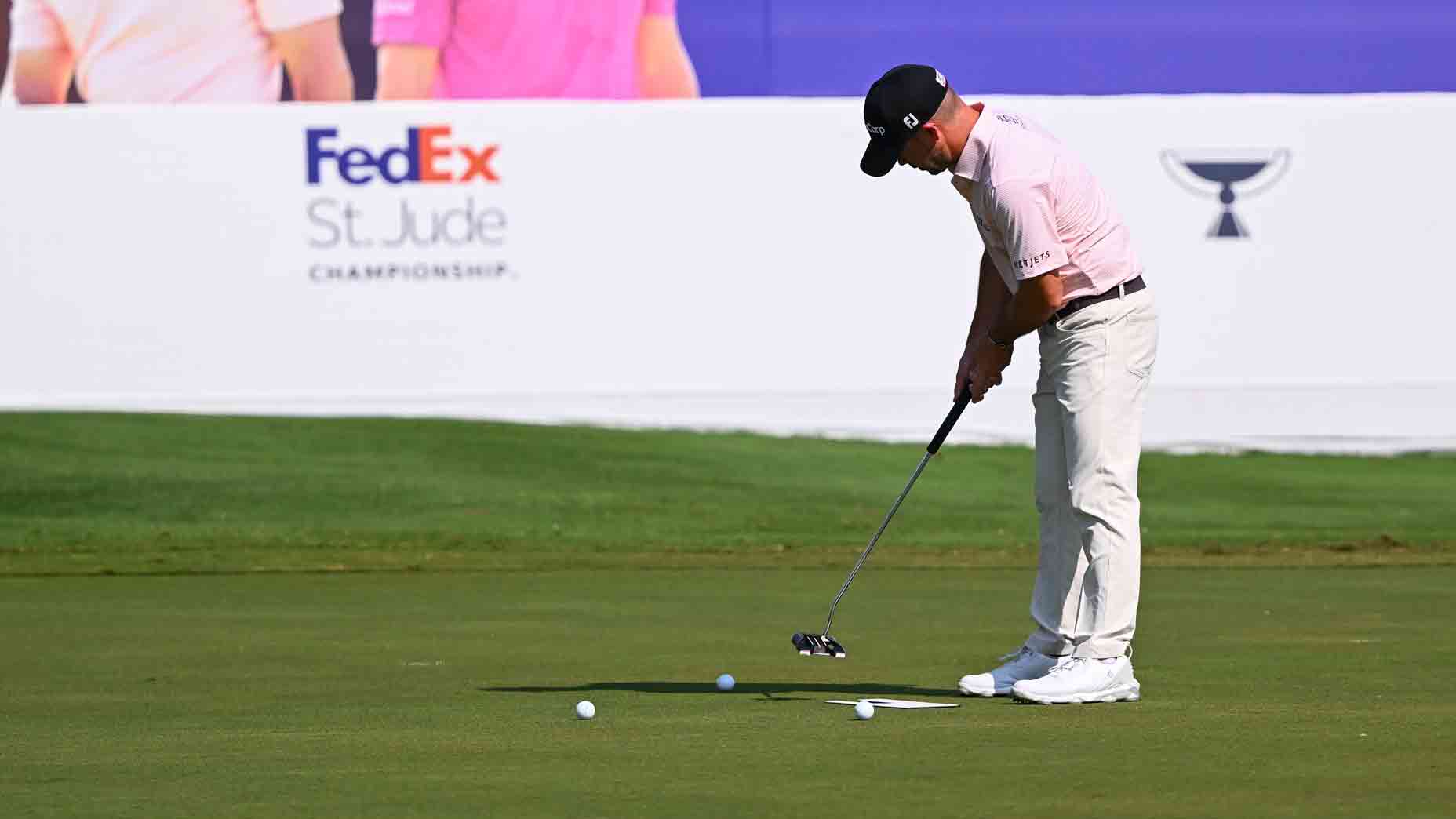 How to develop the traits that all great putters have in common
How to develop the traits that all great putters have in common
Top 100 Teacher Confidential: The secret to putting on Bent, Bermuda and Poa Annua grass

Bent, Bermuda, and Poa Annua; three different types of grasses, each with their own challenges. Here’s how to conquer all of them, according to a handful of GOLF Top 100 Teachers…
Cheryl Anderson, Mike Bender Academy
Bermuda greens are typically slower putting surfaces than bent greens and won’t break as much as bent greens. Slope is the biggest factor in reading any type of green but one must also pay close attention the grain on Bermuda greens. The grain will grow towards the setting sun in most cases and will affect the direction and speed of putts. Bent grass greens are usually smoother, faster and hold their line due to the finer blades of grass. Play more break on the bent greens and expect the greens to roll quicker than Bermuda greens. Poa Anna greens are normally the bumpiest and require the most patience. They are most common on theist coast.
Jason Baile, Jupiter Hills Club
If you are going to be an elite putter on all types of surfaces you need to be aware of a couple of key points:
Mindset: Embrace the unique challenges each major strand of grass puts in front of you. The cool season varieties pose the challenge increased speeds, while the warmer season strands like Bermuda can throw grain into the picture. Strands like the Poa varieties we see on the west coast can be very unpredictable in the afternoon after some growth. What ever these grasses put in front of you, you must possess a mindset that allows you to adapt quickly and easily with little stress if you are truly going to be an elite putter in a variety of situations. Players who play all over the world in competitive situations have to learn this mindset to survive.
Skills Travel: I believe there are four basic skills possessed by elite putters; The ability to start the ball on your intended line. The ability to predict and control speed. The ability to read greens well, and finally believing you are a great putter no matter what. Guess what? These skills travel for the most elite putters in the game. Practice being skillful always and no matter what surface you are playing on, remember that these four skills still apply.
Want to add power? Learn the difference between swaying and stacking
ADVERTISEMENT
Kevin Weeks, Cog Hill Golf & Country Club
If you travel to play golf you are going to be faced with different types of grasses. The main three found in the United States are Bentgrass, Poa Annua, and Berumda.
All three have their challenges: first is Bermuda it is a thick bladed wirey grass which thrives in the hot humid climates, perfect for the south eastern portion of the United States, Hawaii and The Caribbean. Its thick blades cause it to have vast changes in speed depending if you are putting into the blades or with them. This is known as into or with the grain, it is easy to determine if you are into or against by looking at the color of the grass. If it is dark in color then you are putting into the blades of grass if the grass looks silvery almost with a shine you are putting with the blades growing away from you. When putting into the grain or cross grain increase the speed to help the ball stay on line. In addition, player need to add loft to their putters or use a putter with more loft. This helps launch the ball in the air keeping the balls initial launch above the tops of the grass.
Poa Annua or Poa is found in cooler damp regions of the country, the Midwest, northeast and west coast. This is a really good putting surface except in the spring when the seed heads are popping up. The grass grows quickly and unevenly causing afternoon rounds in late spring and early summer rounds to be frustrating. When tacking Poa Annua the golfer needs to pack their patients as even well struck putts can be knocked off line by the uneven growth. One way to counter this is to hit the ball more solid, one of my favorite drills for this is taking 3 dimes stacking them and learning to take the top dime off the top of the stack. This insures that the golfer will have a good angle of attack and loft.
Most people agree that the best putting surface is Bentgrass. It is a fine blade grass the complete opposite of Bermuda. It thrives when mown closely and is slow growing most of the year. Bentgrass can be cut down very low allowing the greens to become lightning fast. In order to help control the speed I recommend a drill that I got from Loren Roberts. Placing a quarter in the back pocket of the putter and learning to keep the putter in the pocket through the stroke. This will keep the putter from being wildly accelerated through the ball and allow for better distance control.
To receive GOLF’s all-new newsletters, subscribe for free here.
ADVERTISEMENT






